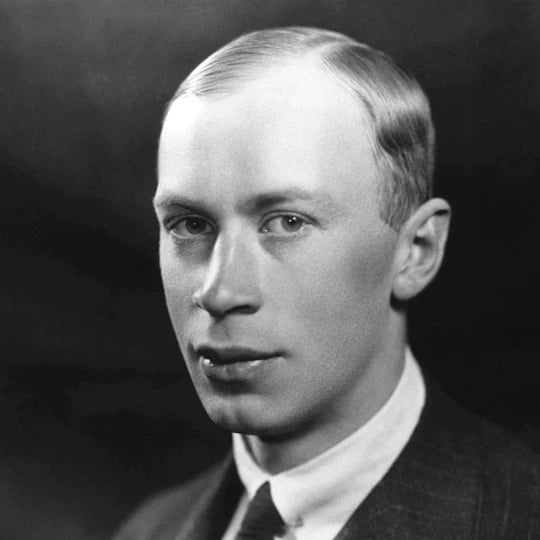
THE ANACHRONISM OF PROKOFIEV'S 'CLASSICAL SYMPHONY' ON THE LEVEL OF THE BEST HAYDN.
Dear audience:
They know that in a few days, specifically on January 20, they have an appointment with Iberian Sinfonietta . One of the attractions of the evening will be Prokofiev 's "Classical Symphony."
Segeri Prokofiev was born in 1891 in Sontsovka, present-day Ukraine. He showed musical talent from a very young age. He studied at the Saint Petersburg Conservatory, where he graduated in 1915 with excellent grades. He was one of the promoters of the Russian musical avant-garde along with Stravinsky and other composers. In his style, modernity is combined with neoclassical elements and a marked humorism and eclecticism.

Sergei Prokofiev
In 1918 he went to the United States, where he lived for several years touring as a pianist. He returned to the Soviet Union in 1936, although he was harshly criticized by the Stalinist regime. Prokofiev composed works for all types of formats, from ballet to opera, including symphonic music. Some of his best-known works are Romeo and Juliet , The Love of Three Oranges , Petrushka . His 5 sonatas and 7 sonatinas for piano, as well as his 5 piano concertos, are also famous.
He died in 1953 in Moscow, being one of the most innovative and outstanding composers of his generation. Its fame is the result of a perfect and difficult union between the popular and the cultured, the classic with the avant-garde, generating an unmistakable style.
His “Classical Symphony” was composed between 1916-1917 as an academic exercise based on classical forms when he was studying at the Petrograd Conservatory, being one of his first successes, as was his Violin Concerto No. 1 . It was premiered in 1918 in Moscow under the direction of Aleksandr Gauk. It consists of four movements and follows the models of the symphonies of Haydn and Mozart. Prokofiev pursues here the ideal of rationalized composition without subjective additions.

The first movement, Allegro, following the patterns of the traditional Sonata Form, presents two clearly differentiated themes. The second, Larghetto, contrasts in character with the first, presenting a simple melody and an innovative rondo structure for a movement of these characteristics. The third movement, Gavota, takes us to the French court world and the 18th century suite with a ternary structure more typical of the traditional classical Minuetto. The final movement, Molto vivace, displays a dense polyphonic framework loaded with numerous effects and dynamic contrasts that show a notable freshness and thematic lightness whose execution demonstrates great mastery in the compositional technique despite the composer's youth.
The work is loaded with a rigorous formal design and emotional containment where, despite its classical appearance, the themes and orchestration denote Prokofiev 's irreverent personality. Contemplating its apparent austerity, the work exudes genius and shows the composer's harmonic ductility, being one of the first successes of his musical career. It is a work that was a nod to tradition and announced the future stylistic versatility of the composer, moving away from the prevailing Russian nationalism and being well valued in interwar Europe. It reveals Prokofiev 's ability to absorb diverse influences and give them his unmistakable personal stamp. Currently, it continues to be praised as one of his best examples of mastery of classical structures.
Not to miss it.
Jorge Rodríguez Morata
Pedagogical content coordinator.
